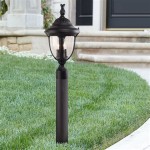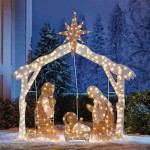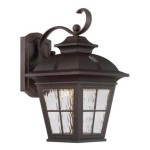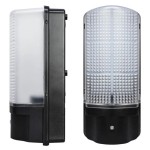Essential Aspects of Outdoor Feature Lighting
Outdoor feature lighting plays a vital role in enhancing the aesthetics, safety, and functionality of outdoor spaces. By illuminating specific features and creating dramatic effects, feature lighting can transform any outdoor area into a captivating and inviting space.
In this article, we delve into the essential aspects of outdoor feature lighting, providing practical guidance to help you create a stunning and effective lighting design for your outdoor space.
1. Purpose and Functionality
The primary purpose of outdoor feature lighting is to highlight and accentuate specific elements within your outdoor space. This can include architectural features such as fountains, sculptures, or archways, as well as natural elements like trees, bushes, and water bodies. By drawing attention to these features, you can create a focal point and add visual interest.
2. Light Intensity and Beam Angle
The intensity of the light and the beam angle are crucial factors to consider when choosing outdoor feature lighting. The intensity determines how bright the light will be, while the beam angle affects the spread of the light. For smaller features, a narrow beam angle will create a more focused effect, while a wider beam angle is suitable for illuminating larger areas.
3. Color Temperature and Color Rendering Index (CRI)
The color temperature of a light refers to its warmth or coolness, measured in degrees Kelvin (K). Warm white light (2700K-3000K) creates a cozy and inviting atmosphere, while cool white light (4000K-5000K) provides a more modern and invigorating feel. The CRI indicates how accurately a light source renders colors. A higher CRI will result in more vibrant and true-to-life colors.
4. Placement and Mounting
The placement and mounting of outdoor feature lighting are crucial for achieving the desired effect. Uplighting, downlighting, and cross-lighting are common techniques used to illuminate features effectively. The mounting height and angle will also affect the spread and intensity of the light.
5. Fixture Selection and Materials
Choosing the right lighting fixtures is essential for both aesthetic and practical reasons. Consider the style and design of your outdoor space and select fixtures that complement the architecture and surroundings. The materials used for the fixtures should be durable and weather-resistant to withstand outdoor conditions.
6. Energy Efficiency and Sustainability
Energy efficiency is an important consideration for outdoor feature lighting. LED fixtures consume significantly less energy than traditional incandescent bulbs, making them a more cost-effective and environmentally friendly option. Solar-powered lights are another sustainable choice that harnesses the power of the sun to illuminate your outdoor features.
7. Maintenance and Safety
Regular maintenance is essential to ensure the longevity and safety of your outdoor feature lighting. Check for any loose connections, damaged wires, or dirt buildup that could compromise the performance of the lights. Always adhere to safety guidelines when installing or servicing outdoor lighting, and ensure proper grounding and electrical connections.
By carefully considering these essential aspects of outdoor feature lighting, you can create an effective and visually stunning design that will enhance the beauty and functionality of your outdoor space for years to come.
Outdoor Lighting Ideas 10 Designs Architecture Design

Outdoor Lighting Design Tips Expert Ideas To Brighten Any Space

5 Outdoor Lighting Upgrades For Your Backyard R I Lampus

Shine On The Complete Guide To Planning Your Outdoor Lighting Canberra Times Act

Extend Outdoor Fun With Expert Lighting Tips

Clearwater Fl Water Feature And Fountain Lighting

Creative Outdoor Lighting Ideas To Brighten Up Your Space Fls

The Best Outdoor Lighting Fixtures For Your Garden Lightbulb Co

Feature Wall Lights Outdoor Lighting Design Garden Modern

Lighting Design Considerations For Outdoor Entertaining
Related Posts







